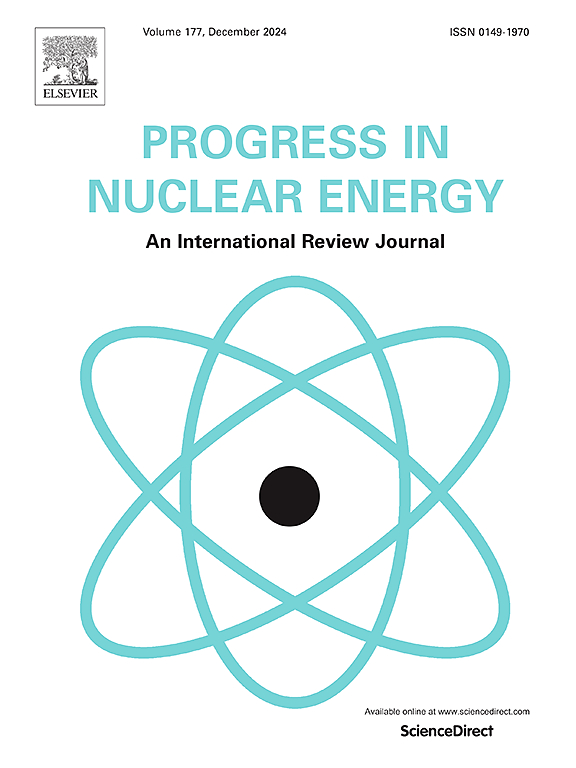Intelligent control of marine second loop steam discharge system based on variable universe fuzzy control
IF 3.3
3区 工程技术
Q1 NUCLEAR SCIENCE & TECHNOLOGY
引用次数: 0
Abstract
The steam discharge system plays a crucial role in marine nuclear-powered ships, particularly in ensuring the safety and maneuverability of the nuclear power systems. Traditional marine steam discharge systems typically employ basic open-loop sequential and PID control strategies to manage various discharge conditions. However, as nuclear-powered vessels continue to evolve, the highly nonlinear nature of their power systems has made control increasingly complicated. Issues such as inadequate control precision, significant overshoot, and extended stabilization times have become increasingly problematic for modern integrated electric propulsion vessels, especially those with multiple reactors and turbines. Fuzzy control, emulating human fuzzy reasoning and decision-making, provides exemplary control performance for systems characterized by elusive dynamic characteristics and nonlinearities. In light of this, the paper first establishes a nonlinear model that couples reactors with steam discharge systems and introduces a novel expansion factor to enhance the precision and speed of response of the control system. Building on this foundation, it proposes a new fuzzy controller design. Simulations under typical operational conditions, such as pressure transitions, rapid discharge, maneuvering discharge, safety discharge, and unit startups, are subsequently executed. The results surpass those of the original control logic, offering valuable insights for the development of steam ejection systems in cutting-edge marine vessels.
求助全文
约1分钟内获得全文
求助全文
来源期刊

Progress in Nuclear Energy
工程技术-核科学技术
CiteScore
5.30
自引率
14.80%
发文量
331
审稿时长
3.5 months
期刊介绍:
Progress in Nuclear Energy is an international review journal covering all aspects of nuclear science and engineering. In keeping with the maturity of nuclear power, articles on safety, siting and environmental problems are encouraged, as are those associated with economics and fuel management. However, basic physics and engineering will remain an important aspect of the editorial policy. Articles published are either of a review nature or present new material in more depth. They are aimed at researchers and technically-oriented managers working in the nuclear energy field.
Please note the following:
1) PNE seeks high quality research papers which are medium to long in length. Short research papers should be submitted to the journal Annals in Nuclear Energy.
2) PNE reserves the right to reject papers which are based solely on routine application of computer codes used to produce reactor designs or explain existing reactor phenomena. Such papers, although worthy, are best left as laboratory reports whereas Progress in Nuclear Energy seeks papers of originality, which are archival in nature, in the fields of mathematical and experimental nuclear technology, including fission, fusion (blanket physics, radiation damage), safety, materials aspects, economics, etc.
3) Review papers, which may occasionally be invited, are particularly sought by the journal in these fields.
 求助内容:
求助内容: 应助结果提醒方式:
应助结果提醒方式:


